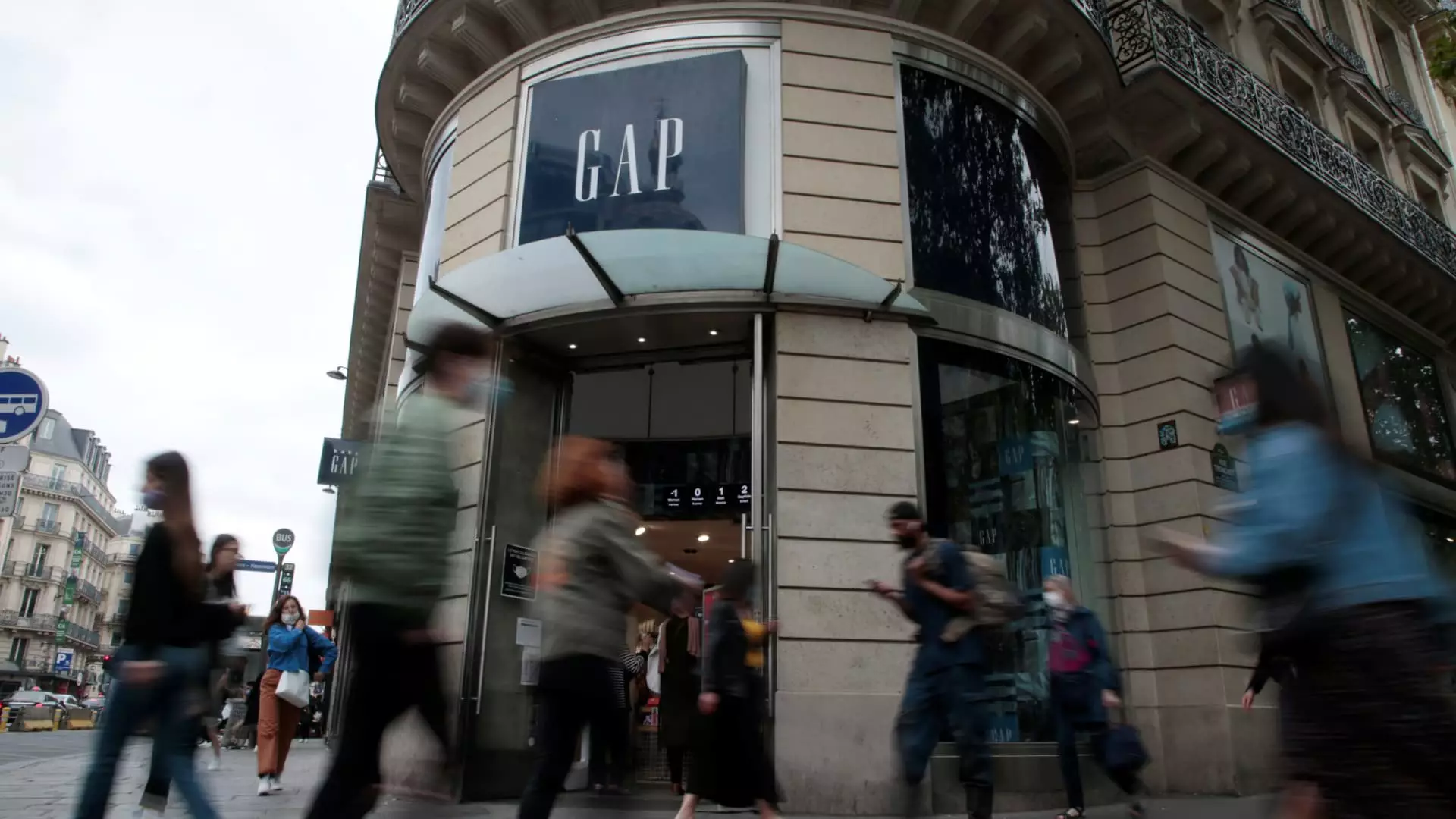In a landscape dominated by unpredictable economic shifts, Gap Inc. finds itself sailing through stormy waters, contending with the imminent repercussions of newly proposed tariffs. The company, in a revealing statement this Thursday, forewarned investors of potential losses ranging from $100 million to $150 million due to looming import duties. This staggering figure reflects the compounded impact of a 30% tax on imports from China and a 10% tariff on goods from other nations. While the stock price has taken a nosedive—plummeting over 15% in after-hours trading—it raises an unsettling question: How much longer can Gap remain buoyant amidst such volatile conditions?
The threat is not merely a hiccup in the financial forecasts; it’s a clarion call to the industry about the far-reaching effects of policy changes. If these tariffs remain in effect without proactive measures, the long-term efficacy of Gap’s business model comes into jeopardy. Indeed, while the CEO Richard Dickson assures stakeholders that mitigation strategies are in place to alleviate some burden—like diversifying suppliers and increasing U.S. cotton sourcing—the sheer scale of these tariffs could strangle profitability.
Balancing Act: The Dual Pressure of Performance and Predictability
What’s most distressing is that the gap between expectation and reality is widening. On one hand, Gap reported impressive fiscal first-quarter results that outpaced Wall Street’s projections, boasting earnings per share of 51 cents against an anticipated 45 cents. This narrative of financial triumph, however, rings hollow in light of the anticipated impact of tariffs. The company is caught in a precarious balancing act, juggling the need to satisfy investor optimism while grappling with unforeseen external pressures.
This scenario reminds us that strong earnings may not necessarily translate into sustained success—especially when the horizon is clouded with uncertainty. The question looms: Will these short-term victories be mitigated by a more significant downturn as tariff-related costs start to take their toll in subsequent quarters? The possibility of flat sales forecasts adds to the woolgathering, leading to deeper concerns about overall consumer confidence in Gap as a brand.
Brand Resilience or Relinquishing Relevance? The Gap Brand’s Identity Crisis
Gap Inc.’s predicament is further complicated by its manifold brands, each undergoing distinct challenges that speak volumes about consumer shifting preferences. For instance, the Old Navy brand exemplifies hope, seeing a 3% sales increase amounting to $2 billion—an encouraging sign in a time of uncertainty. However, while Old Navy’s campaign dynamism attracts attention, the Gap brand itself is wrestling with an identity crisis. This struggle is epitomized by Banana Republic and Athleta, both reporting disappointing sales figures and stagnant growth, risking the brand’s cohesion and overall market presence.
Herein lies a philosophical and strategic quandary for Gap’s leadership: Should they double down on their successful arm, such as Old Navy, or allocate resources to reinvigorate the lagging sectors? The need for an authentic brand story is pressing. Are they adjusting narratives to align with generational shifts toward sustainability and inclusivity, or are they caught in the quagmire of past successes, unwilling to pivot in an ever-evolving market landscape? Dickson seems confident in the potential for brand advocacy through compelling marketing and stylish innovation; however, without tangible and immediate results, it runs the risk of becoming mere rhetoric.
Lessons Lost: Tariffs and the Long Game
As companies like Gap Inc. navigate through the murky waters of international trade and tariff disputes, it becomes imperative to consider strategic foresight and market adaptability as core tenets for survival. The reality is that many brands are succumbing to fatigue from ongoing disruptions—a problem exacerbated by trade wars, particularly under previous administrations. The emphasis on tariffs as a primary tool for economic strategy does nothing to mitigate the undercurrents of consumer dissatisfaction and changing market demands.
There remains hope, as Dickson projects confidence in Gap’s brand power to thrive despite adversity. Yet, the road ahead is fraught with uncertainty: the looming threat of reciprocal tariffs from countries like Vietnam—where a significant percentage of Gap’s products are manufactured—adds to a precarious economic tapestry. In a market where agility and empathy are paramount, how Gap evolves amidst these trials will dictate its trajectory, for better or worse.
One thing is clear: the stakes have never been higher for Gap Inc. The path to recovery may seem illuminated by promising figures, but the shadow of tariffs looms large. In this delicate dance between resilience and reliance, it is fleet-footed adaptability and innovative strategies that will ultimately decide if Gap can steer clear of dangerously turbulent waters.

